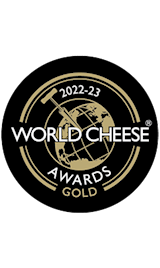TABLE OF CONTENTS
Best Estonian Foods
Pirukas is a typical Estonian snack consisting of dough pockets filled with a variety of ingredients. It can be classified into three categories: küpsetatud (small, baked), praetud (small, fried), and plaadipirukad (large, baked).
The dough can be made with a crumbly, flaky puff pastry, or with regular bread dough. The fillings range from meat, ham, and cabbage to rice, mushrooms, and carrots. Small pirukas can be filled with a variety of different ingredients, but the large ones are filled exclusively with cabbage, meat, and carrots.
MAIN INGREDIENTS
This Estonian and Finnish classic is prepared with a combination of roasted and finely milled flour types, usually oat, rye, barley, and pea flour. The mixture is then blended with dairy products such as buttermilk, kefir, or sour milk in order to create a creamy dish similar to porridge, or a thinner variation that is usually enjoyed as a drink.
Kama or talkkuna is usually served as a nutritious breakfast or a healthy dessert that is often sweetened and complemented by fruits. Because the production of kama flour is labor-extensive and time-consuming, today it is mainly factory-produced and sold packed in boxes.
MAIN INGREDIENTS
Munavoi is a simple Finnish spread consisting of whipped butter combined with mashed hard-boiled eggs. Characterized by a unique coarse texture and a mild, buttery flavor, it is only lightly seasoned with salt and pepper. Apart from Finland, where it is usually spread on bread or served atop Karelian pies, this simple and easily prepared delicacy is also a staple of traditional Estonian cuisine.
MAIN INGREDIENTS
This traditional Estonian open-faced sandwich consists of a slice of rye bread that is topped with a marinated sprat fillet. The bread is often buttered, or coated with munavoi—the coarse egg and butter spread—while the fillets are occasionally complemented by poached or hard-boiled eggs, green onions, and fresh herbs.
This nutritious sandwich is commonly found at local restaurants and is often served on festive occasions.
MAIN INGREDIENTS
Vispipuuro, russedessert, klappgröt, debesmanna, or mannavaht are different names for a creamy Baltic semolina porridge that is prepared with fresh fruit such as tart lingonberries, cranberries, or red currants. When cooked, the thick porridge is whipped until it transforms into a unique treat with a frothy and light consistency.
It is traditionally topped with cream or milk and garnished with fresh fruit. Found across Finland, Estonia, Sweden, Norway and Latvia, this dish is usually enjoyed as a sweet breakfast, a light midday snack, or a refreshing dessert.
MAIN INGREDIENTS
This popular fuchsia-colored salad is a staple side dish in traditional Estonian cuisine. It is prepared with pickled herring and bite-sized pieces of beets and potatoes, all coated in a refreshing, creamy dressing. The salad is easily adaptable and often includes onions, pickles, smoked meat, hard-boiled eggs, or apples, while the dressing is usually made with a combination of mayonnaise and sour cream, with the occasional addition of mustard, horseradish, and various fresh herbs.
Rosolje is typically served well chilled and makes an excellent accompaniment to meat or sausages.
MAIN INGREDIENTS
Verivorst is a traditional blood sausage and the country's national dish. It is a typical winter meal, usually served during the Christmas festivities, when piles of verivorst sausages are roasted together with potatoes and pork. The sausage consists of pig's blood, pork, barley, onions, allspice and marjoram.
All of the ingredients are stuffed into a pig's intestine, and the sausage is typically accompanied by butter, sour cream, and sauerkraut on the side. For the best experience, verivorst should be topped with a zesty compote made from cranberries or lingonberries.
MAIN INGREDIENTS
Kohupiimakreem is an Estonian dessert consisting of a delicious cream made from curd cheese which is combined with vanilla, sugar, and whipped cream. This dessert is always served cold, and it is recommended to top it with raisins or fresh berries for maximum enjoyment.
Although it's often made at home, this dessert is also sold commercially in small plastic containers.
Sõir is a soft Estonian caraway-flavored cheese made with whole milk, cottage cheese, butter, eggs, salt, and caraway seeds. It is typically served on bread or crackers, either for breakfast or as a snack. When paired with boiled potatoes, sõir is usually served for lunch or dinner.
Traditionally, this cheese is consumed around the Midsummer's Eve bonfire, known as jaanituli.
MAIN INGREDIENTS
Even though it is traditionally prepared with pork, Estonian aspic can occasionally employ chicken, veal, and even fish. It is usually cooked with pig’s hock and feet, a choice of meat, seasonings, and a variety of vegetables. When cooked, the bones are removed, the meat is sliced, and the mixture is refrigerated until it turns into a gelatinous treat.
Sült is usually enjoyed at festive occasions as a buffet meal, but it is also commonly served as an appetizer or the main course, when it is traditionally complemented by boiled potatoes, mustard, and horseradish sauce.
TABLE OF CONTENTS
Best Estonian Food Producers
AWARDS

SFWSC - San Francisco World Spirits Competition - Double Gold
2024, 2023
BEST GINDOME Spirits
AWARDS

World Gin Awards - Country Winner
2024, 2021
BEST TOHI DISTILLERY OÜ Spirits
AWARDS
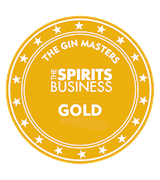
The Gin Masters - Gold
2022
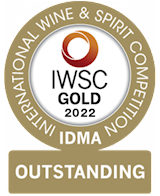
IWSC- International wine & spirit competition - Spirit Gold Outstanding
2022

IWSC- International wine & spirit competition - Gin Gold Trophy
2022
BEST Junimperium Spirits
AWARDS

Academy of Chocolate - Gold
2021, 2020
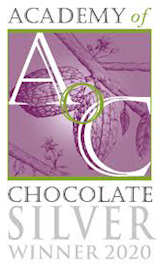
Academy of Chocolate - Silver
2023, 2021, 2020

Academy of Chocolate - Bronze
2024, 2023, 2022, 2021, 2020
BEST Chocokoo Chocolates
AWARDS

The Liqueur Masters - Gold
2023, 2022

The Gin Masters - Gold
2022

IWSC- International wine & spirit competition - Spirit Gold
2020
BEST Liviko Spirits
Saaremaa is a premium brand of spirits produced by the Saaremaa Distillery in Estonia. The brand is known for its high-quality vodkas and other flavored spirits, crafted using pure local ingredients from the island of Saaremaa. Saaremaa is part of the Anora Group, a leading Nordic and Baltic drinks company, which also owns several other well-known brands.
The distillery's products, including the iconic Saaremaa vodka, reflect the region's rich tradition of spirit production while incorporating modern distilling techniques. Through Anora Group's support, Saaremaa continues to expand its reach, offering a taste of Estonian heritage to the global market.
AWARDS

IWSC- International wine & spirit competition - Spirit Gold
2024

The Gin Masters - Gold
2022

The Vodka Masters - Gold
2022
BEST Saaremaa Spirits
TABLE OF CONTENTS
Best Estonian Food Products
AWARDS

IWSC- International wine & spirit competition - Spirit Gold Outstanding
2022

IWSC- International wine & spirit competition - Gin Gold Trophy
2022

World's Best Sloe Gin - Winner
2021
Chocokoo's Organic Nordic lingonberry chocolate is a premium product that combines high-quality chocolate with the unique taste of Nordic lingonberries. This combination offers a distinctively tart and sweet flavor profile, enhanced by the natural qualities of organic ingredients.
Each bar is crafted with an emphasis on sustainability and careful sourcing, ensuring that consumers enjoy a pure and eco-friendly treat.
AWARDS

Academy of Chocolate - Gold
2021
AWARDS

Academy of Chocolate - Gold
2020
AWARDS
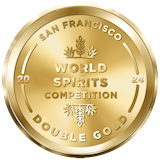
SFWSC - San Francisco World Spirits Competition - Double Gold
2024
AWARDS

SFWSC - San Francisco World Spirits Competition - Double Gold
2023
AWARDS

The Gin Masters - Master
2022
AWARDS

World Gin Awards - Country Winner
2024
AWARDS

World Gin Awards - Country Winner
2024
AWARDS

World Gin Awards - Country Winner
2022
AWARDS

World Gin Awards - Country Winner
2021
TasteAtlas food rankings are based on the ratings of the TasteAtlas audience, with a series of mechanisms that recognize real users and that ignore bot, nationalist or local patriotic ratings, and give additional value to the ratings of users that the system recognizes as knowledgeable. TasteAtlas Rankings should not be seen as the final global conclusion about food. Their purpose is to promote excellent local foods, instill pride in traditional dishes, and arouse curiosity about dishes you haven’t tried.







